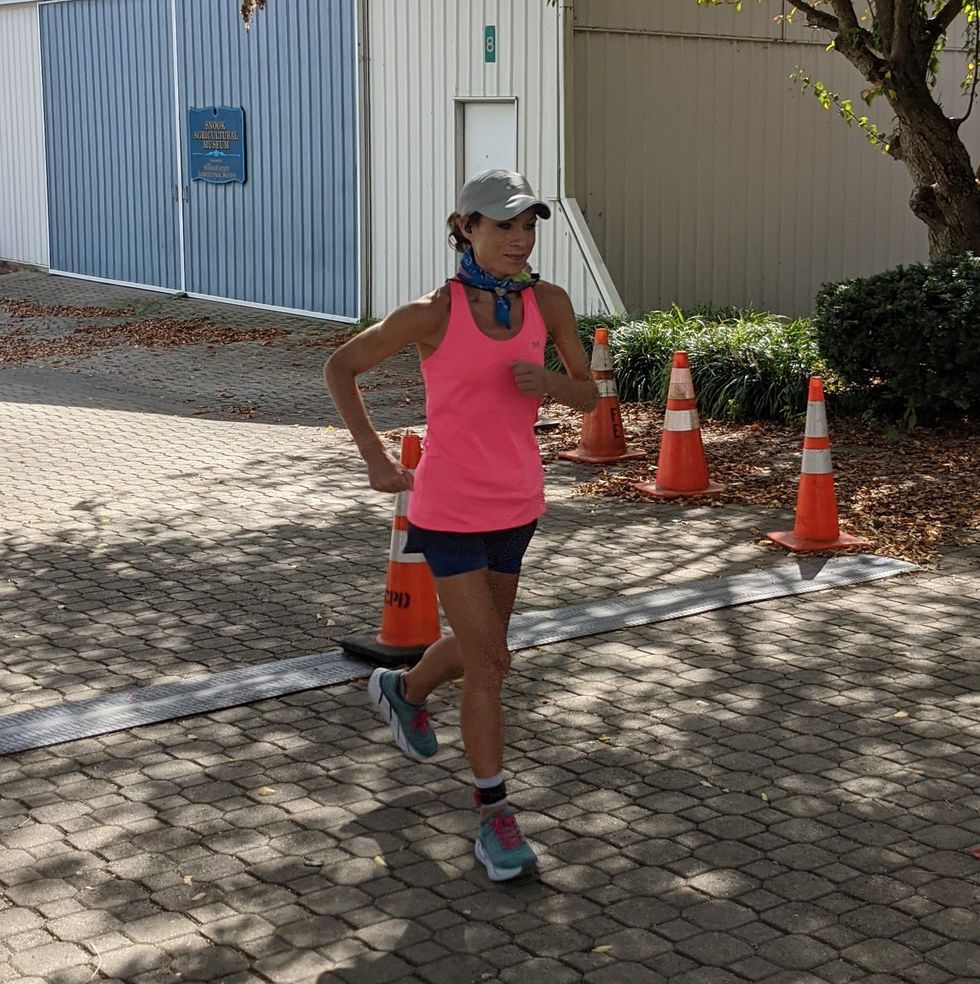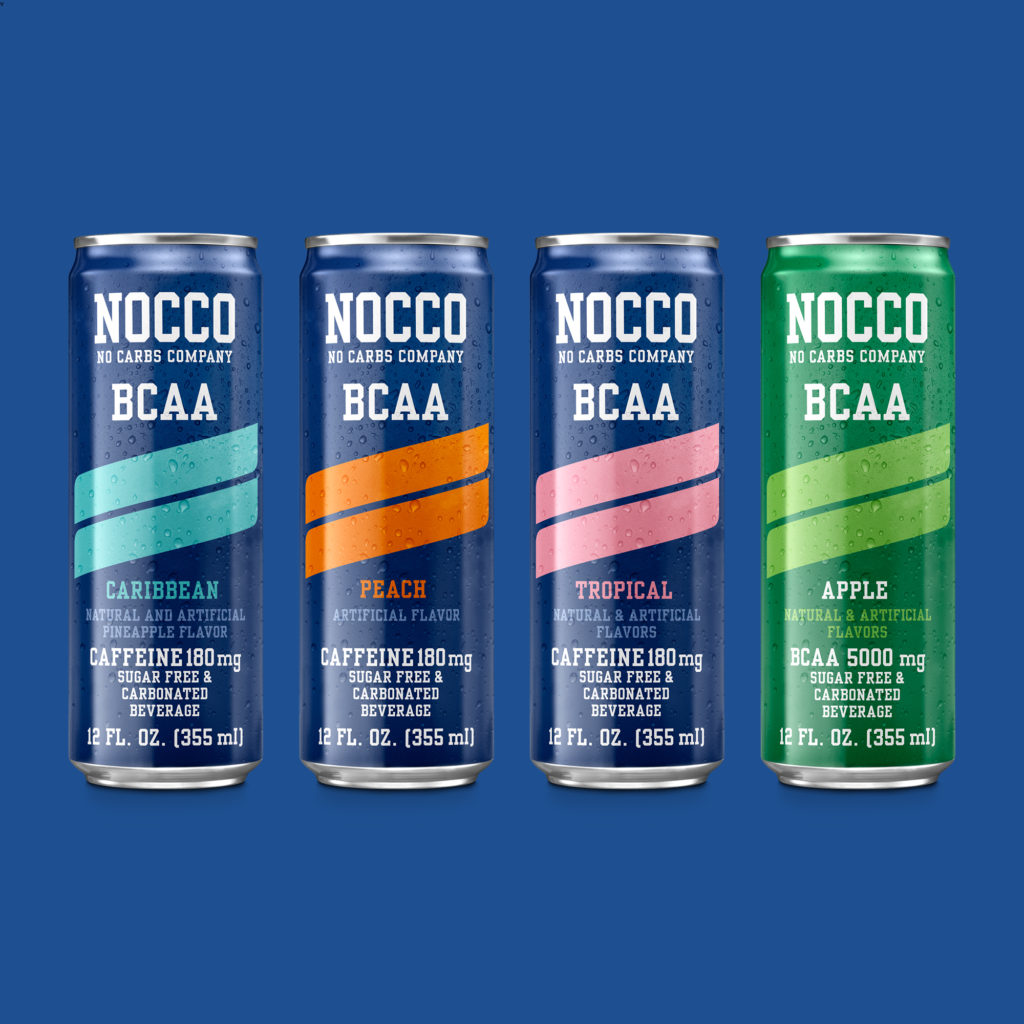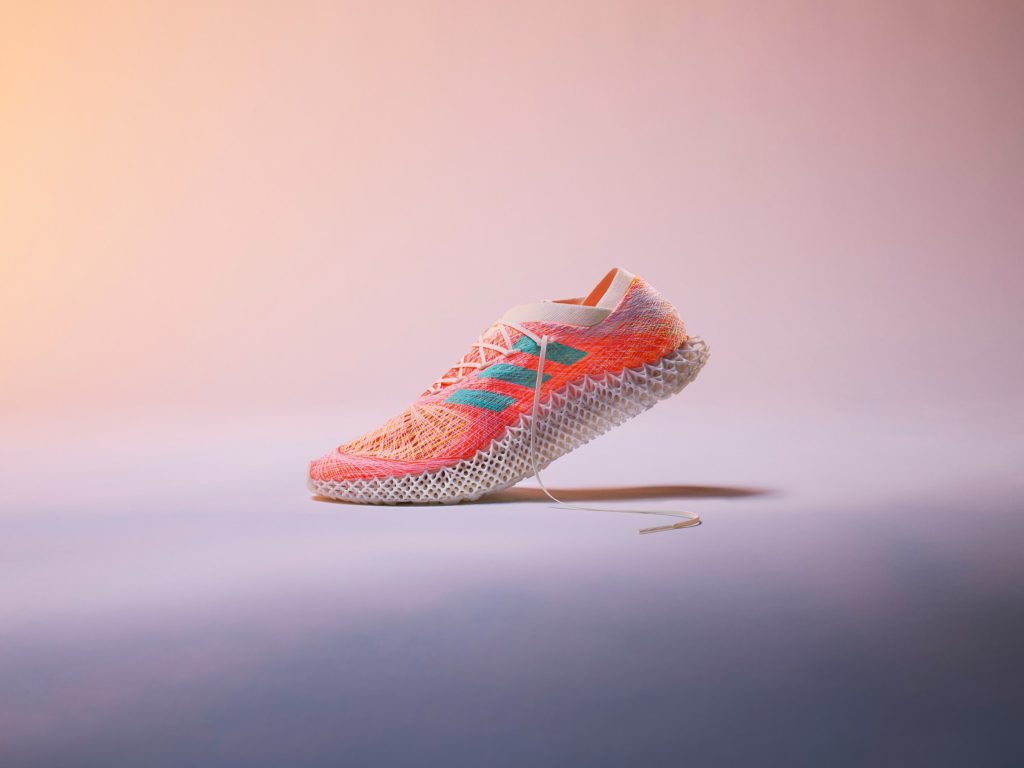
Adidas built custom robotics and software, using high-resolution scans of runners’ feet to develop the technology.
Read more about it on Wired.
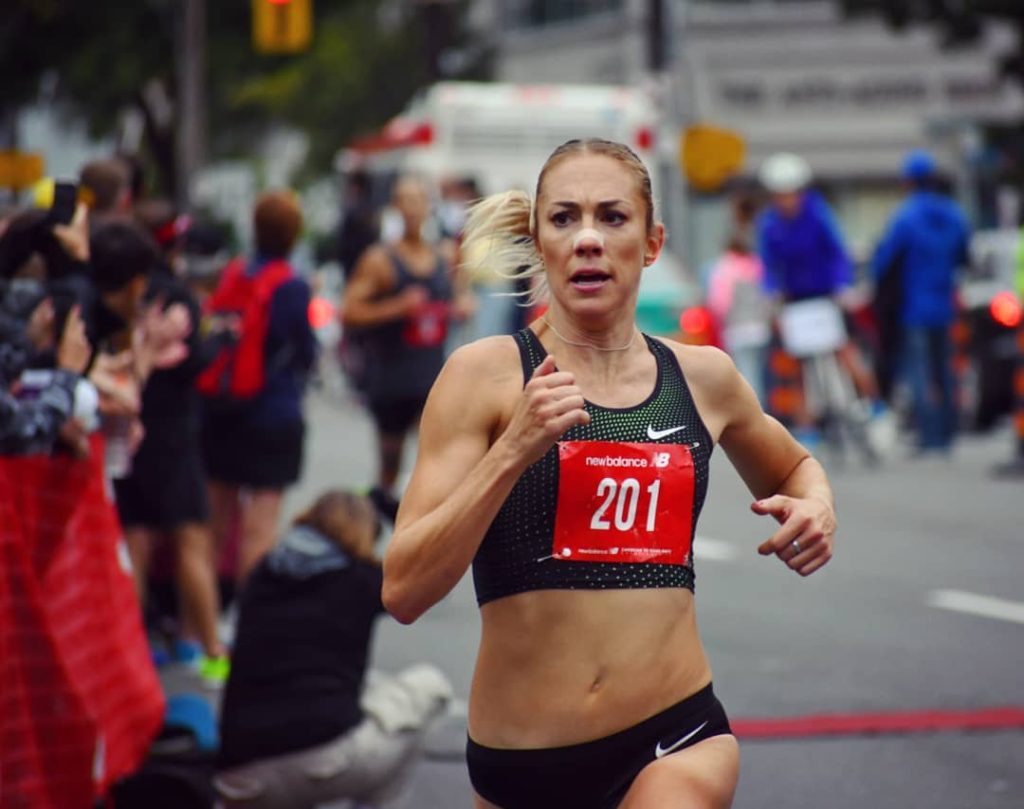
A study conducted by the International Journal of Kinesiology and Sports Sciences, tested 10 runners who implemented nasal-only breathing for six months while exercising. The study found that the runners’ respiratory rate (breaths per minute) and ratio of oxygen intake to carbon dioxide output decreased during nasal breathing compared with mouth breathing.
Researchers point out that the lower breath rate used during nasal breathing allows more time for oxygen to get to the bloodstream, suggesting that you can produce the same work and oxygenation (VO2 Max) while breathing through your nose as you can with your mouth. When you breathe slowly and deeply through your nose, you extract more oxygen with each breath.
To read the full article from U.S. News click here.
The original race was scheduled for April. It was subsequently postponed to October, until last month when officials decided to cancel the race completely. Now, more than 45,000 people from 81 countries signed up to run the virtual race on Sunday, October 4th.
Athletes will be able to run the 26.2 mile distance on their own course. They will still receive a race number, t-shirt and a finisher’s medal.
“The response has been amazing and the spirit of the London Marathon will shine brightly across the globe on Sunday 4 October,” Hugh Brasher, Event Director for the Virgin Money London Marathon, said in a statement.
“We believe it is the biggest virtual marathon ever staged. It is also the most inclusive race in our history with runners having 23 hours, 59 minutes and 59 seconds to complete the 26.2 miles.
“We hope that millions will be raised for charities by our participants and we look forward to sharing their stories.”
For more information, please visit:
https://www.virginmoneylondonmarathon.com/your-way/home.html
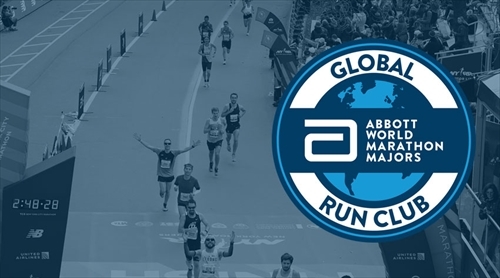
The virtual platform will allow marathon runners to connect, inspire and celebrate their performances. The AbbottWMM Global Run Club will include a variety of running challenges staged in tandem with the five virtual AbbottWMM races taking place from September to November.
Runners will be able to compare their performances with their peers on challenge leaderboards and grab exclusive AbbottWMM Global Run Club medals for their efforts. Additionally, runners can access a library of running related tips and advice.
“We are delighted to launch the AbbottWMM Global Run Club today and provide another innovative way to connect our global community of runners,” says Tim Hadzima, Executive Director of the Abbott World Marathon Majors. “Whether it’s a support tool for your marathon training, challenging yourself to get back into running, or aiming to set a new personal best, the Global Run Club is the perfect complement to the ongoing work of the Abbott World Marathon Majors. We will have a lot to offer every level of runner, wherever in the world they may be.”
Here is the schedule of events, which runs from September to November.

For more information or to sign up, please visit the AbbottWMM Global Run Club by clicking here.

In July, employees from the San Diego Metropolitan Transit System participated in a pilot program to test the viability of wearable fitness devices as tools for tracking early signs of Covid-19.
The idea is that slight changes in heart rate, sleep pattern and physical activity levels are subtle indications of an infection. If these changes are observed, it could motivate people to get tested before major symptoms of the virus appear.
The benefits to communities are that it could help them spot outbreaks earlier, alert people who are asymptomatic, but contagious and assist local officials with increasing testing and tracing protocols.
Read the full article on Bloomberg.
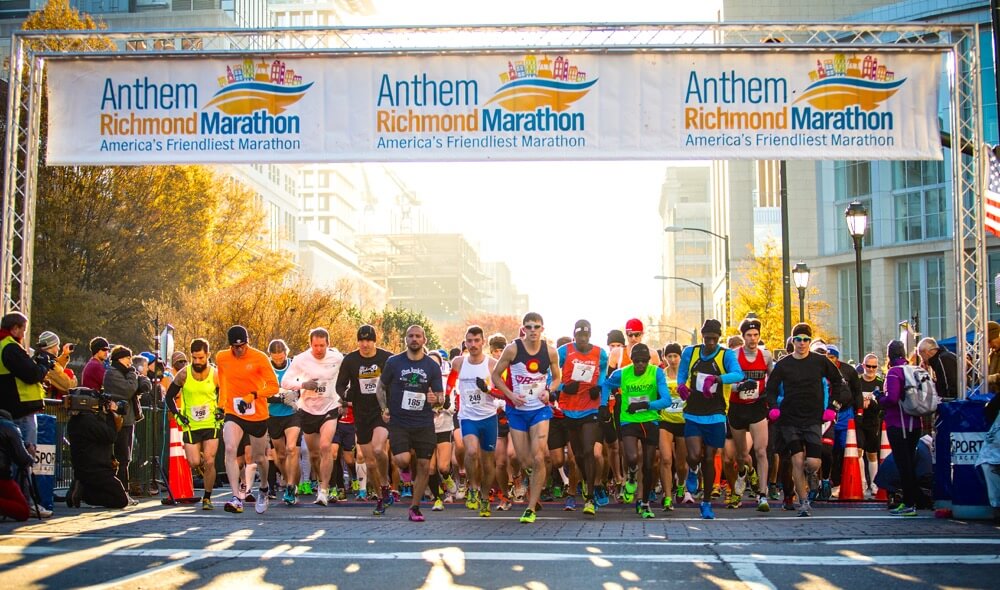
The 2020 Richmond Marathon was originally scheduled to take place on Saturday, November 14th and like so many other races, it cannot be held as planned due to public health guidelines. However, the event organizers are offering an interesting and exciting alternative. Registered athletes will be able to run the official course from November 7th to November 22nd.
The course will be marked and measured, with an official start and finish line in Dorey Park. A paved 10-12 foot wide path along the Virginia Capital Trail provides participants safety, as it is a protected route. The course will have mile markers, bottle real stations and restrooms, just like an official race.
“We look forward to the Richmond Marathon every year and we are happy to be able to provide a way for participants to step up to a start line, take on the challenge of a marathon, half marathon, or 8k, and feel the joy and excitement of crossing the finish line,” said Megan Schultz, Chief Operating Officer for Sports Backers and race director for the Richmond Marathon. “We know many participants are already training and many more are looking for opportunities to take part in an event this fall and we think this is an innovative way to meet that demand.”
The course will be open daily from 5 am to 5:30 pm and RaceJoy will track participant times and compile a race leaderboard.
Please visit www.richmondmarathon.org for more details about the course, schedule and registration options.
BibRave is a website where runners can leave reviews and feedback about races. Each year race venues are nominated and voted on to determine the best races in America. Due to many cancellations from COVID-19, the 4th edition of the BibRave 100 will feature the best races over the last 10 years.
The BibRave 100 will be comprised of the Top 20 Marathons, Top 20 Half Marathons, Top 20 races of 10 miles or less and the Top 5 races in these categories:
- Best Medals & Swag
- Best Themed Race
- Best Virtual Race
- Best Bites & Bevvies
- Best Relay Experience
- Best Race-cation
- Toughest Race
“2020 has been a brutal year for the racing business, so we wanted to reimagine The BibRave 100 in a way that would flip the narrative from a lost year to a decade of celebration,” said Tim Murphy, Co-Founder of BibRave. “BibRave has always been committed to highlighting the best of the best races, and we’re really excited for how the 2020 edition of The BibRave 100 will help runners and events celebrate and eventually return to racing.”
The nomination period ran from June 29th to July 31st and now runners can vote on the finalists through August 31st.
Please visit the nomination page for more details and to cast your vote!
Earlier this week, Planet Fitness announced that as of August 1st, members are required to wear masks at all of the company’s 1,450 locations in North America and Australia. However, they later backtracked on that statement and said that members will not have to wear face covering if they are “actively working out.”
Here is the official statement:
“At Planet Fitness, our members and employees are our number one priority, and we remain committed to providing a safe and clean environment where everyone feels comfortable. We are instituting a universal, standard mask policy in all of our stores effective August 1, although after hearing member feedback, we will be making a slight adjustment to this policy. Members will now be required to wear masks at all times within our facilities except while actively working out and in accordance with local and state restrictions. Health and wellness is more important now than ever, and we are confident that we have taken numerous precautions to ensure the safety of our community, including enhanced cleanliness and sanitization efforts, physical distancing measures in our large and spacious stores, touchless check-in and more.”
Please visit the website to learn more: www.planetfitness.com
Garmin said the investigation is ongoing and the company is planning a multi-day maintenance window to address the cyber attack, which includes taking down its website, disabling the Garmin Connect app, disconnecting aviation database services and halting some production lines in Asia. It’s unclear whether or not any customer information was compromised.
A ransomware attack is designed to encrypt its victims’ computers and demand a ransom to open them up again.
Garmin customers have been unable to sync their devices to Garmin’s servers since Thursday. In addition, pilots have been unable to download Garmin’s aviation database to their Garmin airplane navigational systems.
Due to the impact of COVID-19, the 2020 editions of the IRONMAN World Championship and the IRONMAN 70.3 World championship have been canceled.
The majority of qualifying events were postponed and could not take place in 2020, which impacted the ability of athletes to qualify for the races. The continuation of existing travel restrictions worldwide was another major factor that led to the cancelation of this year’s championship events.
New Dates
IRONMAN World Championship: October 9, 2021 in Kailua-Kona, Hawaii
IRONMAN 70.3 World Championship: September 17/18, 2021 in St. George, Utah
Here is a statement from Andrew Messick, the President & CEO for The IRONMAN Group.
“It is with a heavy heart that we have made the decision to cancel the 2020 editions of the IRONMAN World Championship and IRONMAN 70.3 World Championship. While we were hopeful that we could welcome our athletes, their families, and supporters to these events in early 2021, the continued impact of the pandemic makes this impossible. It is tough to make this decision in July, but it will provide the necessary clarity for our athletes, host cities and partners,” said Andrew Messick, President & Chief Executive Officer for The IRONMAN Group. “It is disappointing not to be able to provide our racing community with the opportunity to compete in the IRONMAN World Championship for the first time in our 43 year history and our IRONMAN 70.3 World Championship for the first time since inception in 2006. We will endure, however, and look forward to the day when we will again assemble the greatest professional and age-group triathletes in the world and crown world champions.”
Anyone who qualified for the 2020 editions of the World Championship events will be contacted directly and will have the opportunity to race in 2021 or 2022.
For more information, please visit www.ironman.com/im-world-championship
Organizers announced that the 43rd running of the Chicago Marathon is canceled due to the pandemic. This comes after many of the six Abbott World Major Marathons have already been canceled this year, including Tokyo, Boston, NYC, and Berlin. Only the London Marathon has yet to be canceled, which is slated for Sunday, October 4th.
“The Chicago Marathon is our city’s beloved annual celebration of more than 45,000 runners, as well as tens of thousands of volunteers, spectators and city residents, all of whom come together race weekend as one community here in our city,” Mayor Lori Lightfoot said in a statement. “Like all Chicagoans, I’m personally disappointed that this year’s event won’t take place as originally planned; however, we look forward to welcoming all runners and their cheering squads once again when the Chicago Marathon returns to our city in full force for another very exciting race.”
Registered participants can receive a refund of the race entry fee or they can opt to defer their entry for the 2021, 2022 or 2023 race.
The first Chicago Marathon took place on September 25, 1977 and it had only 4,200 runners. This years event was expected to draw more than 45,000 runners and 1.7 million spectators. Organizers estimate that the race has a $338 million economic impact on the city of Chicago.
The only other time the Chicago Marathon was canceled was in 1987, when Sponsor Beatrice Foods withdrew its support for the race.
“Our highest priority has always been the safety of our participants and our volunteers,” race director Carey Pinkowski said in a statement. “We understand the disappointment, but when we return to the streets of Chicago, it will be a celebratory moment and an uncompromising statement about the collective spirit of who we are as a running community: We are powerful, we are persistent, and we will reach the finish line again.”
Visit the website for more information, https://www.chicagomarathon.com/
Here are the guidelines that Massachusetts is rolling out ahead of the state’s reopening plan for health clubs and fitness centers this month.
The key takeaways are that facilities will be limited to 40% capacity, equipment must be spaced 14 feet apart and sanitized between each use with disposable wipes, everyone in the gym must wear a face covering (unless its unsafe due to a medical condition or disability), facilities are encouraged to install plexiglass barriers at service centers, water fountain stations should be for bottle refill only, showers must be closed, gym lockers must be marked for social distancing, and gyms should limit circuit training.
Social Distancing
Each facility must monitor visitor entries and exits, ensure social distancing, and limit occupancy at all times to:
-
40% of the facility’s maximum permitted occupancy as documented in its occupancy permit on record with the municipal building department or other municipal record holder
-
Facilities for which no permitted occupancy limitation is on record may allow 8 persons per 1,000 square feet of accessible indoor or outdoor space
-
In any case, no enclosed space within the facility may exceed occupancy of 8 persons per 1,000 square feet
-
All occupancy counts and calculations shall include visitors, staff, and other workers
Arrange all equipment (weights, machines, treadmills, bikes, etc.) so exercise areas are spaced out at least 14 feet apart. Spacing of machines may be adjusted to at least 6 feet apart if barriers are installed
If spacing of equipment is not possible, equipment should be blocked off (e.g., every other machine) to maintain 14 feet distancing
Install visual markers (boundaries, walkways, signage, etc.) to encourage customers to remain at least 6 feet apart while moving throughout the space
Establish directional pathways to manage visitor flow for foot traffic, to minimize contact (e.g., one-way entrance and exit to rooms, one-way pathways). Post clearly visible signage regarding these policies
Stagger lunch and break times for workers, regulate the maximum number of people in one place and ensure at least 6 feet of physical distancing between workers
Close or reconfigure common spaces and high-density areas of facilities where workers are likely to congregate (e.g., break rooms and eating areas) to allow 6 feet of physical distancing
Close or reconfigure other common spaces where customers are likely to congregate or where social distancing is not possible, such as lobbies and waiting areas
Require face coverings for all workers and visitors, except where unsafe due to medical condition or disability
If customers cannot wear a face covering during strenuous fitness activities, physical distancing must be at least 14 feet. If customers are wearing face coverings during fitness activities, physical distancing must be at least 6 feet
Install physical partitions in areas where physical distancing is not possible, such as service counters
In group fitness classes, 14 feet of physical distancing must be maintained between attendees at all times. If physical barriers are installed between group fitness equipment, 6 feet of physical distancing should be maintained
Recommended Best Practices
Consider installing plastic barriers between equipment where possible. Barriers must extend high enough to effectively block respiration from someone using the equipment. If barriers are installed, they must be cleaned regularly
Consider establishing “workout zones” to encourage spacing of customers using free weights, dumbbells, etc.
Contactless payment and sign-in methods are encouraged
Hygiene Protocols
Ensure access to handwashing facilities on site, including soap and running water, and allow enough break time for workers to wash hands frequently; alcohol-based hand sanitizers with at least 60% alcohol may be used as an alternative
Distribute hand sanitizer and disposable wipes abundantly throughout the space for workers and customers to disinfect their hands and equipment before and after use
Disposable wipes should be placed next to each piece of large equipment (such as treadmills, bikes, rowing machines) and next to each area containing smaller equipment (such as free weights)
Require trainers to wash hands before and after each training session and sanitize frequently during each session
All equipment must be sanitized between uses. No equipment should be used by another customer or returned to the storage rack / container without being sanitized
Encourage customers to use one piece of equipment at a time (e.g., limit circuit training or “super sets” with multiple pieces of equipment) in order to facilitate required sanitizing. Facilities must provide sanitization supplies at each piece of equipment in order for customers to clean in between each use
If sanitation (or the monitoring thereof by employees) of any piece of equipment is not possible or practical, this equipment should be closed off
Encourage customers to use their own personal exercise equipment (such as spin shoes, jump ropes, yoga mats, etc.) when possible. If shared items are used, they must be sanitized in between each use
Post visible signage throughout the site to remind workers and customers of hygiene and safety protocols
Allow water fountains to be used as refill stations only, provided that social distancing can be maintained. Customers and workers should bring their own water bottles or purchase from the business
Staffing and Operations
Encourage outdoor exercise, classes, sessions, etc. where possible, so long as appropriate physical distancing is maintained at all times and any equipment used is sanitized after each use
Personal trainers should maintain six feet of distance from clients to the extent possible and should minimize any prolonged close contact. Personal trainers must wear face coverings. Any equipment used during the personal training session must be sanitized after each use, or at the end of the session if the client was the only person who used the equipment during the session
Provide training to workers on up-to-date safety information and precautions including hygiene and other measures aimed at reducing disease transmission, including:
-
Social distancing, hand-washing, proper use of face coverings
-
Self-screening at home, including temperature and symptom checks
-
Reinforcing that staff should not come to work if sick
-
When to seek medical attention if symptoms become severe
-
Which underlying health conditions may make individuals more susceptible to contracting and suffering from a severe case of the virus
Adjust workplace hours and shifts (working teams with different schedules or staggered arrival / departure) to minimize contact across workers and reduce congestion
Require customers to sign up for classes in advance
Facilities must screen workers at each shift by ensuring the following:
-
Worker is not experiencing any symptoms such as fever (100.0 and above) or chills, cough, shortness of breath, sore throat, fatigue, headache, muscle/body aches, runny nose/congestion, new loss of taste or smell, or nausea, vomiting or diarrhea
-
Worker has not had “close contact” with an individual diagnosed with COVID-19. “Close contact” means living in the same household as a person who has tested positive for COVID-19, caring for a person who has tested positive for COVID-19, being within 6 feet of a person who has tested positive for COVID-19 for 15 minutes or more, or coming in direct contact with secretions (e.g., sharing utensils, being coughed on) from a person who has tested positive for COVID-19, while that person was symptomatic
-
Worker has not been asked to self-isolate or quarantine by their doctor or a local public health official
-
Workers who fail to meet the above criteria must be sent home
Maintain a log of workers and customers to support potential contact tracing (name, date, time, contact information)
Close or limit waiting areas and, for class-based activities with distinct session times, ask customers to wait outside or in cars until 10 minutes prior to their class
Schedule 30-minute windows between classes to allow for thorough cleaning and appropriate ventilation of the fitness room, and to discourage congestion
Clearly designate staff responsible for sanitizing, cleaning, and supervision during each shift
Workers must stay home if feeling ill
If the employer is notified of a positive case at the workplace, the employer shall notify the local Board of Health (LBOH) in the city or town where the workplace is located and assist the LBOH as reasonably requested to advise likely contacts to isolate and self-quarantine. Testing of other workers may be recommended consistent with CDC or DPH guidance and / or at the request of the LBOH
Post notice to workers and visitors of important health information and relevant safety measures as outlined in the Commonwealth’s Mandatory Safety Standards for Workplace
Close or mark lockers to enforce 6 feet social distancing, especially in locker rooms. Lockers should be sanitized after each use. Gyms should provide sanitizing wipes near the lockers or in the locker room
Close all communal and individually partitioned showers. Showers that accompany pools may follow guidance for pools located on the Reopening Website
Require that towels be stored in clearly labeled (clean vs. soiled) sanitary containers. Appropriate temperatures should be used when washing and drying towels. Employees must wear proper protective equipment (gloves and face covering) while handling towels. Towels should not be shaken out
Operations of related services may be allowed to open and must follow sector-specific safety protocols for each setting. Some examples include:
-
In-facility child-care: Must follow child-care guidance
-
Bars/food services: Must follow restaurant guidance
-
Pools: Must follow pool guidance
-
Athletic facilities (e.g., tennis courts): Must follow adult and youth sports guidance
-
Massage: Must follow close contact personal services guidance
-
Saunas, hot-tubs, and steam rooms: May not open before Phase 4
Fans should not be used indoors and should only be used for outdoor classes if directed away from other customers
For indoor and outdoor sports guidance, please refer to the EEA Reopening Site
Recommended Best Practices
Consider creating “shifts” for customers engaging in unstructured exercise (i.e., open weight rooms) by using a reservation system in order to enforce occupancy limits
Workers who are particularly high risk to COVID-19 according to the Centers for Disease Control (e.g., due to age or underlying conditions) are encouraged to stay home
Encourage workers to self-identify symptoms or any close contact to a known or suspected COVID-19 case to the employer
Encourage workers who test positive for COVID-19 to disclose to the workplace employer for purposes of cleaning / disinfecting and contact tracing
Consider setting aside specific hours of operation exclusively for vulnerable populations
Limit employees to discrete work zones to minimize overlap where possible
Cleaning and Disinfecting
Clean commonly touched surfaces in restrooms (e.g., toilet seats, doorknobs, stall handles, sinks, paper towel dispensers, soap dispensers) frequently and in accordance with CDC guidelines
Conduct frequent cleaning and disinfection of site (at least daily, and more frequently if feasible)
Keep cleaning logs that include date, time, and scope of cleaning
Conduct frequent disinfecting of heavily transited areas and high-touch surfaces (e.g., doorknobs, handrails, equipment, etc.)
In the event of a positive case of a worker, customer or vendor shut down site and wait 24 hours before cleaning and disinfecting of the workplace in accordance with current CDC guidance
Disinfect all fitness equipment or mutually-touched objects (e.g., spin shoes, jump ropes, dumbbells, etc.) immediately after each use. At no point should customers come in contact with objects that others have touched without first being disinfected according to CDC guidelines
Recommended Best Practices
Open windows and doors to increase airflow where possible
“Defendants should not be permitted to force Plaintiff and members of the class to bear the financial burden of the events canceled as a result of COVID-19,”
The complaint was filed on behalf of Mikaela Ellenwood, a Colorado resident who had registered for the Rock n’ Roll San Francisco half-marathon, which was scheduled for April 5th. As a result of the race cancellation, she was deferred to the race next year and was not given an option for a refund.
Ironman’s standard cancellation policy pre-COVID states that an athlete can transfer or defer to another race for a fee, and that they can not get a refund unless they purchased registration insurance.
However, if a race is officially cancelled or postponed due to the virus, athletes are offered a choice of transferring to another event or deferring to next year for no additional fee.
There are many problems with the current policy as it relates to COVID-19.
First, athletes must wait for an official announcement from Ironman to verify that their race is cancelled or postponed. Many athletes make flight and accommodation reservations months in advance, so they are stuck in limbo on whether or not to cancel their travel plans, as they wait for the communication message from Ironman.
Second, the flexibility offered by Ironman once a race is officially cancelled or postponed is minimal. For example, 2020 was supposed to be the final year for some race venues, which means that there is no option to defer to the same venue in 2021. As a result, athletes must choose a completely different race. Not to mention an entirely different date that may not work with their current professional and personal living situation.
Lastly, due to cross-border travel restrictions, some athletes are not allowed to make scheduled races even if they want to.
Still, it may be an uphill battle to win the lawsuit because when an athlete registers for an event, there are a number of waivers, terms and conditions they must sign. For example, it’s common to acknowledge that you will not be refunded in the event of a cancellation due to the weather or due to an act of God— this is referred to as a “force majeure” clause. Not surprisingly, race registration for Ironman events now include a waiver outlining the risk of COVID-19 and agreeing not to hold the company liable.
If the case is certified it will be open to all those in similar circumstances.
To view the complaint, please visit:
https://www.chamberlitigation.com/sites/default/files/Ellenwood%20v%20World%20Triathlon%20Corp.pdf
To follow the docket, please visit:
https://www.pacermonitor.com/public/case/34283586/ELLENWOOD_v_World_Triathlon_Corporation_et_al
Originally slated for July 19th, the 2020 Verizon New York City Triathlon cannot go on as planned, due to the ongoing Coronavirus pandemic. Instead, the event will pivot to a Virtual Duathlon, beginning on Saturday, July 11th.
“We are disappointed about having to forego the Verizon New York City Triathlon for the second consecutive year, following last year’s excessive heat cancellation but are proud of the unique virtual experience we’ve created,” said Nicole Bostick, Associate Marketing Director at Life Time. “The safety of our athletes, volunteers, race officials and spectators remains our top priority and we feel that the timing is not right to gather more than 2,500 athletes to the swim start on July 19. While it is unfortunate that these terrific competitors will not be swimming, biking, and running through the heart of Manhattan, we are excited to see them compete against each other virtually. It’s going to be a fun, interactive and safe racing experience.”
Life Time is offering the following options to all registered triathlon participants as a result of the 2020 event cancellation:
-
Complimentary deferral to the 2021 or 2022 New York City Triathlon, as well as complimentary access to the 2020 Virtual Duathlon.
-
The option to donate their entry fee to the NYC Schools food program, along with a guaranteed entry into the 2021 race, as well as access to the 2020 Virtual Duathlon.
-
A full refund, minus processing fees, but no complimentary access to the virtual duathlon.
The 2020 Virtual Duathlon will include three categories:
Ultimate Challenge: Compete all three legs back-to-back like a traditional duathlon. Athletes must submit results of each leg upon completion any time between July 11-19.
Intermediate Challenge: Complete each leg individually within the following time frames, submitting results following the completion of each leg:
-
One-mile run – July 11-13
-
25-mile bike – July 14-16
-
6.2-mile run – July 17-19
Basic Challenge: Athletes can compete each leg at their convenience any time between July 11-19 and submit results prior to July 19.
To learn more about the Life Time Tri Series and to register for the 2020 Virtual Duathlon, please visit https://www.nyctri.com/.
New York Road Runners (NYRR) announced today that the 2020 TCS New York City Marathon has been cancelled and released the following statement:
“The health and well-being of our running community is of the utmost importance. Due to coronavirus-related health and safety concerns for runners, spectators, volunteers, staff, and the many partners and communities that support the event, and in partnership with the Mayor’s Office of the City of New York, we made the difficult decision to cancel the world’s largest marathon”
Individuals registered for the race will have the option to choose one of the following:
-
A full refund of your entry fee
-
A guaranteed complimentary entry for the 2021 Marathon
-
A guaranteed complimentary entry for the 2022 Marathon
-
A guaranteed complimentary entry for the 2023 Marathon
-
Donate the value of your entry fee to support NYRR’s free youth and community programs
For more information, please visit the FAQs.
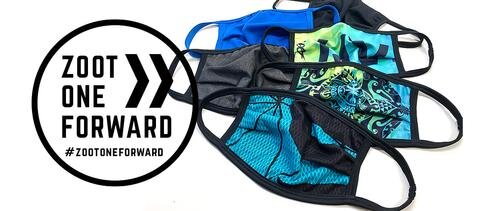
image credit: Zoot Sports
Zoot Sports announced a new collection of face coverings for athletes. They are available in 15 colors and there is even an option to design your own mask through their quick turn custom program.
“The safety of all athletes and those around us is a priority while training. Wearing a face covering is one step we can all take to help protect each other.” says Shawn O’Shea, President of Zoot Sports. “Our passion for training and racing in the sport of triathlon remains. We want to do our part to help keep our Ohana safe.”
The masks are designed with 2-layer ultra-lightweight Italian AEROMAX fabric and 15% Elastane stretch for maximum comfort and breathability. They are machine washable and have a filter opening that can incorporate a disposable filter for extra protection.
Zoot is also launching a collection of Cooling Neck Sleeves as an alternative to face masks that can easily be pulled up or down during rides and runs. The sleeves are designed with Xylitol infused fabric to create a cooling effect upon contact with moisture and air.
For more information, please visit https://zootsports.com/collections/masks
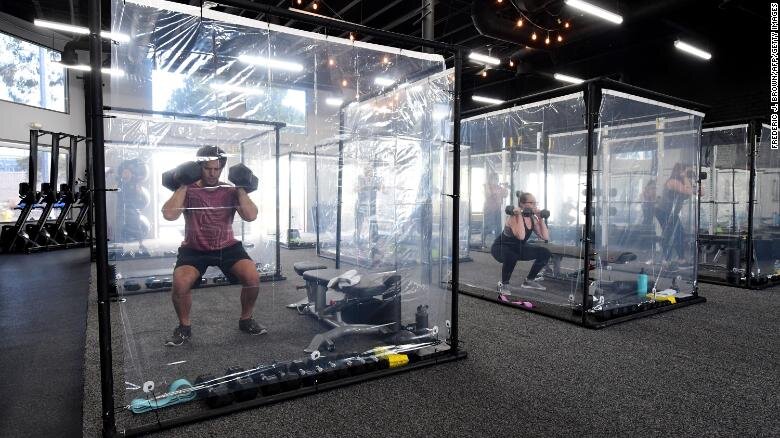
image credit: CNN
The innovative pods are constructed from shower curtains and PVC pipes, measuring approximately 6 feet wide and 10 feet tall. The quirky solution was inspired after owner Peet Sapsin and his wife realized that people couldn’t breathe in masks, so mandating them was not the most effective solution. Instead, they designed the pods and their clients couldn’t be happier.
All of the equipment that is necessary for a workout is inside the pods, including a bench, mat, and dumbells, as well as copious amounts of disinfectant spray. The workout studio is cleaned daily, with fans and doors open to circulate the air.
Testing their new standards and protocols since COVID-19 began, Spartan Race successfully hosted its first mass endurance event. The obstacle race in Jacksonville, Florida on Saturday, June 13th had 1,253 finishers. This compares to 8,000+ participants on an average weekend.
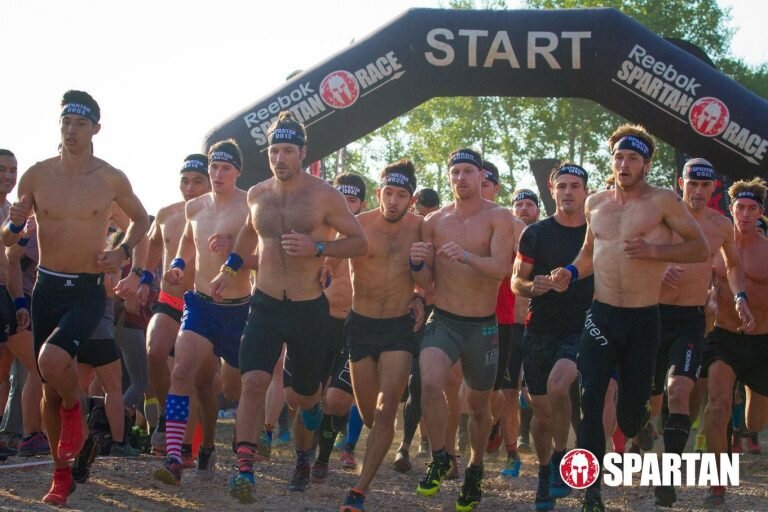
Spartan Race, along with Tough Mudder, Ironman, Rock N Roll Marathon, and many other endurance event operators formed the Endurance Sports Coalition shortly after the pandemic began. It was formed as an effort to unify the running, triathlon, multi-sport, obstacle course and cycling event industries to secure ongoing support and relief for mass participation event operators, the employees, athletes and suppliers. Participant registrations and sponsorships are the primary source of income for these events, and without either, many of the 50,000 events will not be able to survive through to 2021.
Spartan considered the Florida race a success, given its new “return to racing” protocol, which includes a series of changes to its standards and operating procedures to keep all racers, event staff and volunteers safe.
Here are a few of the steps that Spartan is taking:
-
Enhanced cleaning and sanitation
-
Reduced customer touchpoints
-
Hand sanitizer available at every obstacle
-
Sealed bottled water Instead of cups
-
-
Personal Protective Equipment
-
All event staff and volunteers will wear face coverings at all times
-
Racers to wear masks in the festival area
-
Transparent plastic shields at key interaction points
-
-
Social Distancing
-
Each racer is given a specific arrival and departure time
-
Minimum number of people in the event spaces
-
Heat sizes reduced
-
Dedicated lanes and waiting spots where racers congregate
-
-
Screening (Racers, Staff, Volunteers)
-
Contactless temperature checks
-
Customer declaration that they are not infected by COVID-19 and have not been in contact with someone who has it in the past 14 days.
-
The U.S. Centers for Disease Control and Prevention recommends that people wear face coverings when out in public in places where it’s hard to stay at least 6 feet away from others.
While transmission of COVID-19 is less risky when running, cycling or exercising with no one around, many people still opt to use a face mask.
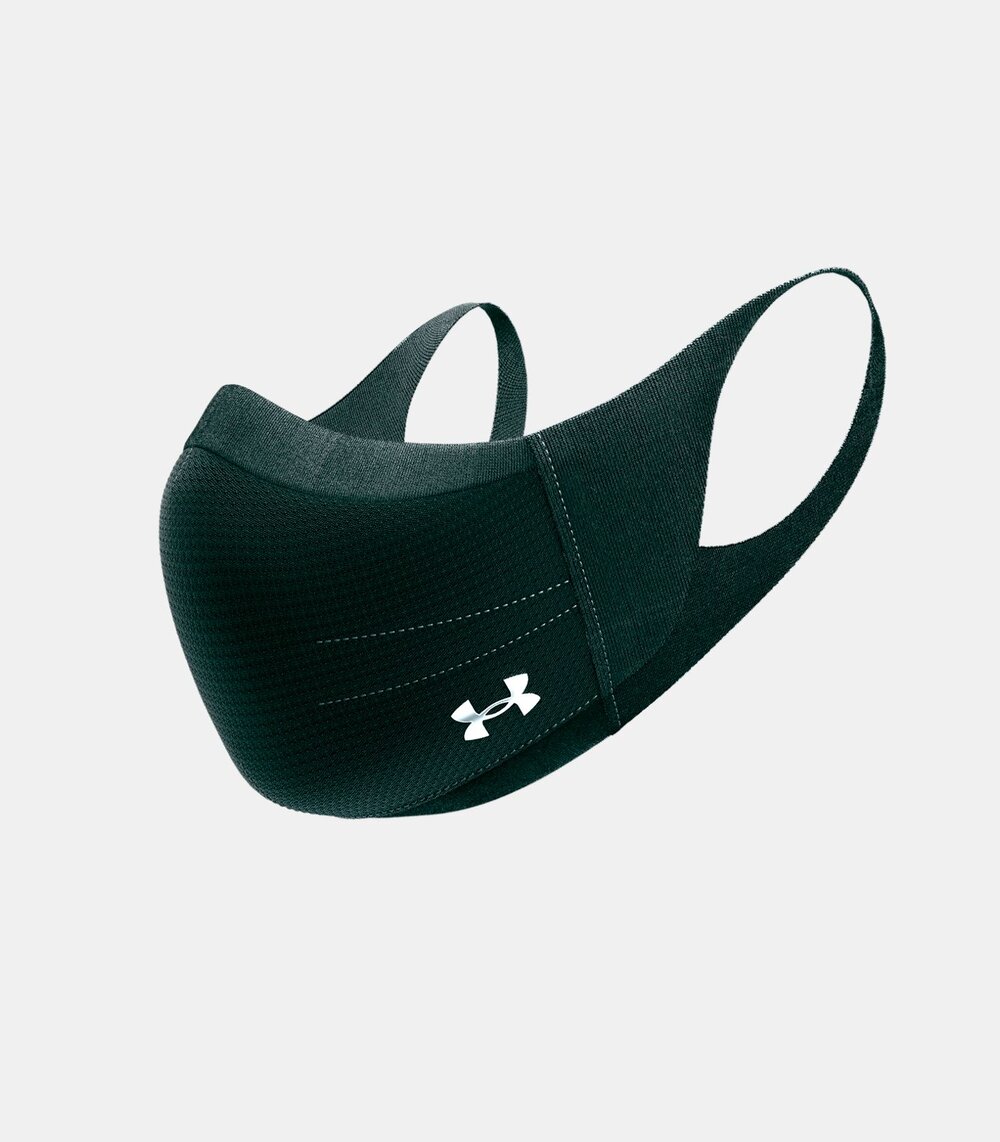
The problem is that it’s difficult to breath through a mask when running or doing physical activity due to a lack of air flow. As a result, Under Armour launched a face mask designed specifically for athletes, called the UA Sportsmask. It comes in four sizes and is hand washable.
The mask is designed for comfort and breathability, among other features:
-
Water-resistant outer shell features smooth, breathable spacer fabric
-
Anti-microbial treatment on the inside layer to help keep mask fresh
-
Polyurethane open-cell foam lets air through but makes it hard for moisture & sweat to pass
-
UA Iso-Chill fabric on interior lining & ear loops feels cool to the touch for as long as you wear it
-
Fabric is soft & smooth for next to face comfort & moves moisture from your mouth to the insert layer
-
Lining fabric extends up & is strategically shaped to lay flat across the bridge of your nose
-
Soft, adjustable nose bridge to secure it across the face
-
Stretchy ear loops & side panels for a more comfortable fit
-
Includes washable, anti-microbial carrying pouch with locker tag to mark your name or number
The Wikiwiki 2.0 means “speedy fast” in Hawaii and it’s the company’s top of the line wetsuit. It features FLEXskin 0.3 mm Yamamoto super stretch neoprene in the arm and shoulder, which is designed to enhance stroke recovery after the catch phase. The material is so flexible that it makes the wearer feel like it’s a sleeveless suit. The retail price is $800.
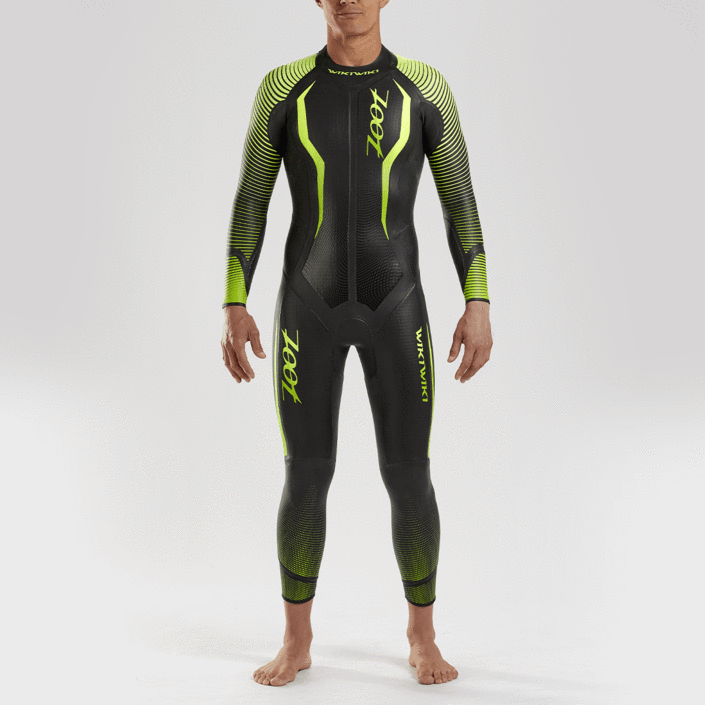
Men’s Wikiwiki

Women’s Wikiwiki
The Bolt wetsuit is built for triathletes who don’t have ideal swimming technique, as the wetsuit is designed for buoyancy, flexibility and speed. It utilizes Yamamoto AERODOME to improve form and positioning in the water without sacrificing speed. The retail price is $500.
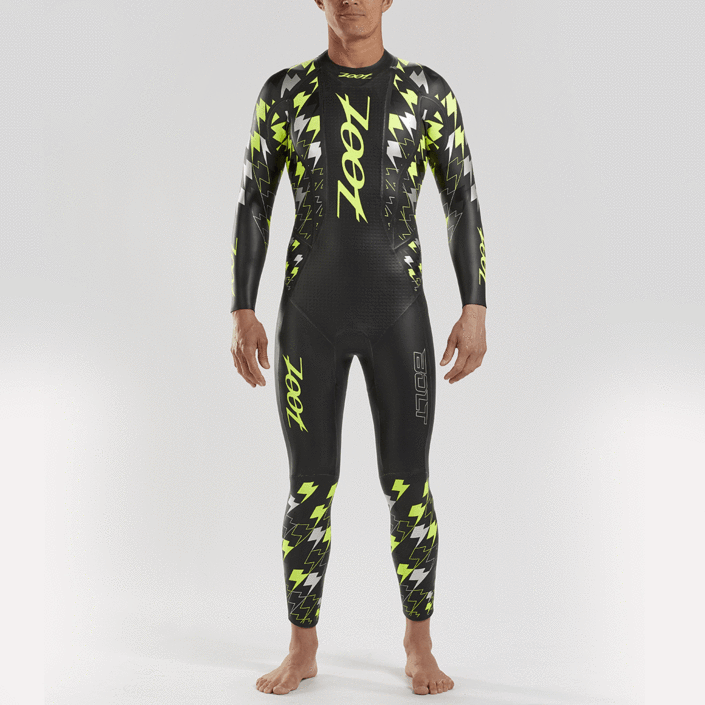
Men’s Bolt

Women’s Bolt
The Kona is a competitively priced all-round wetsuit that delivers many of the same technical benefits of the high-end Zoot wetsuit range. It has a GLIDEflex grooved panel in the chest to allow full expansion of the lungs, which helps stimulate deeper breaths. In addition, ti has AQUAlift buoyancy technology that raises the hips to put the body in a more efficient swimming position. The retail price is $300.
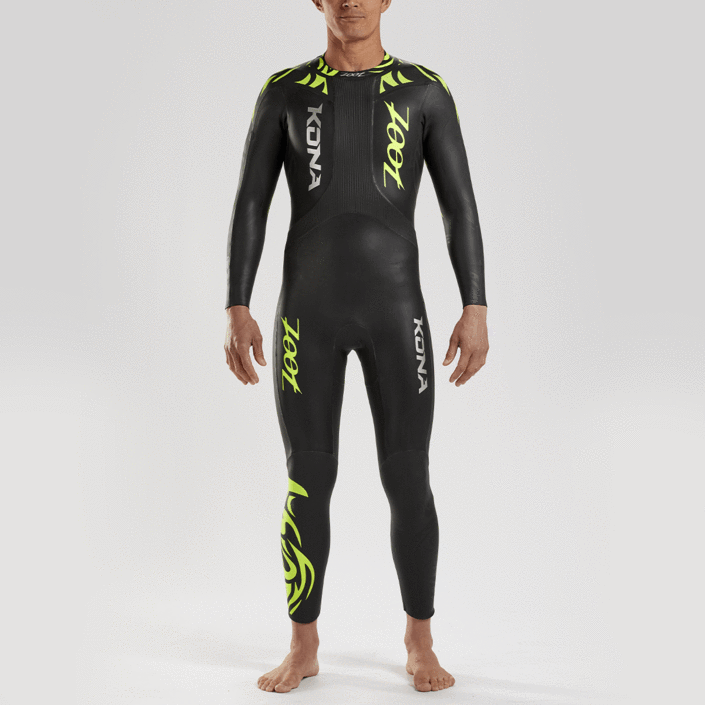
Men’s Kona
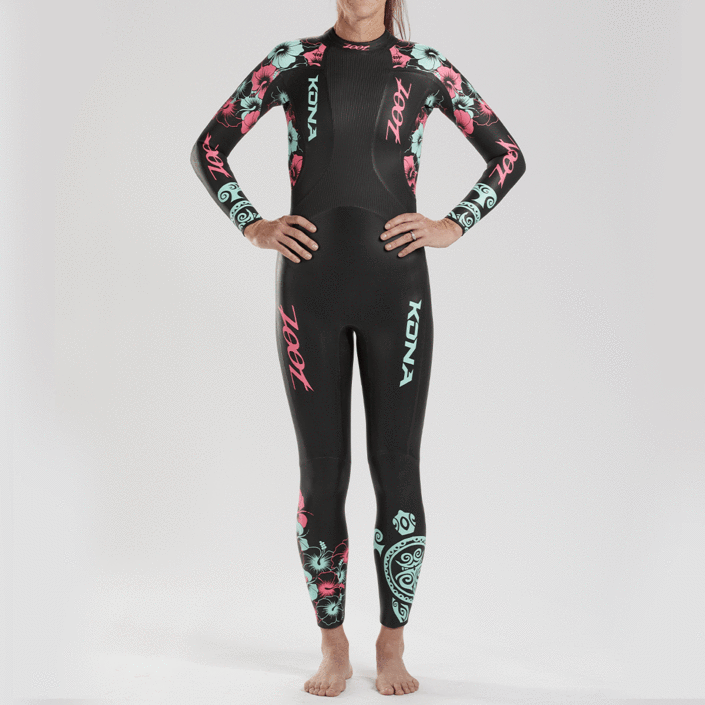
Women’s Kona
The Kona Sleeveless rounds out the new lineup. It has the same features as the Kona and retails for $250.
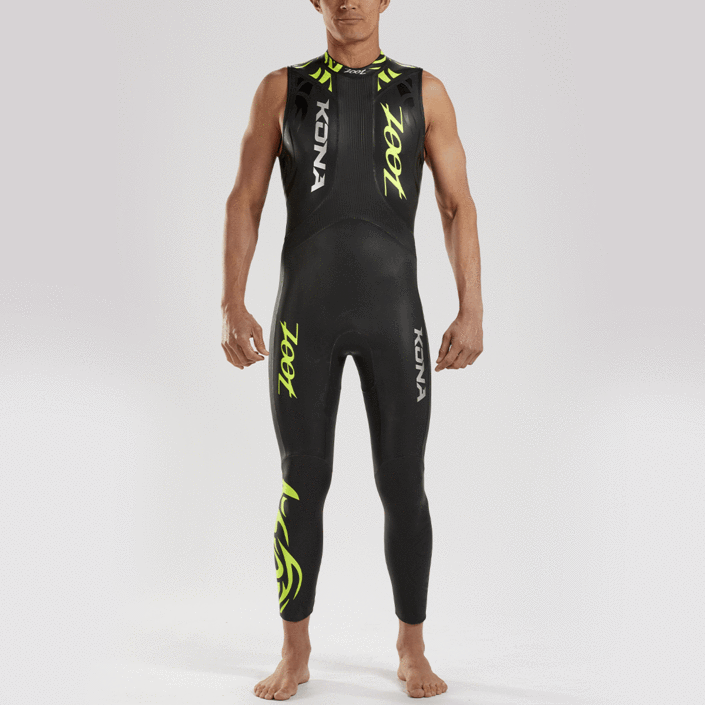
Men’s Kona Sleeveless
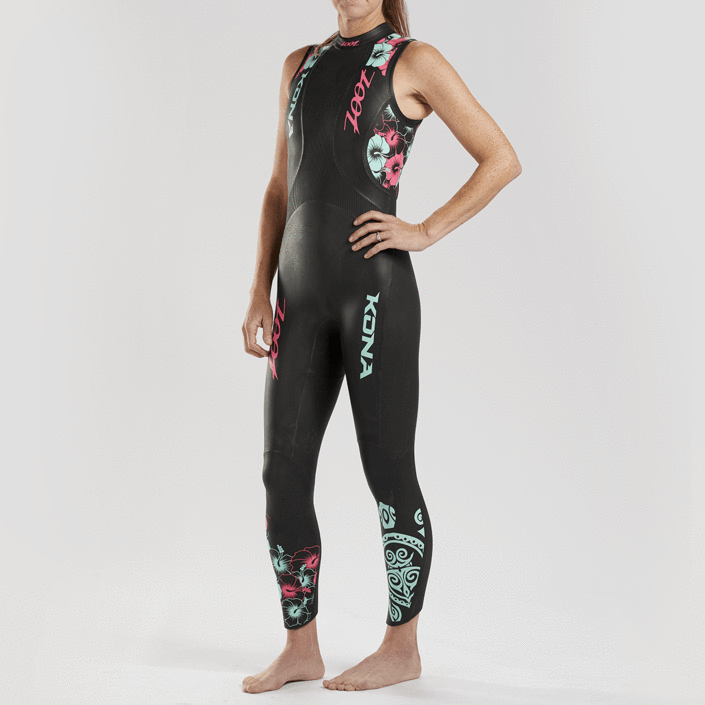
Women’s Kona Sleeveless
To learn more about the wetsuits, visit www.zootsports.com.

image credit: Forbes
In fact, many bicycle shops are running out of inventory. Children and adult bicycles have seen double and triple digit sales increases, according to NPD.
One thing that has helped is that bike shops were deemed “essential businesses” in many states. In addition, cycling is an activity that people can do while socially distanced and a lot of people are substituting mass transportation (trains and buses) for bicycles.
There is also a big surge in people bringing in old bikes for repair. Bikes that are 5 to 10 years old, but just need a little tuning.
One high-end road bike and triathlon shop in London reported that entry level bike sales were up by 677%.
In New York City, the DOT is reporting a 50% increase in cycling traffic over the same time in 2019. While in Philadelphia, cycling traffic is up 150%.
This comes at a time when more and more cities are closing streets and modifying traffic patterns to accommodate cyclists. With the evolution of ebike technology, more and more people are reconsidering how they commute to work.
While the news is certainly positive for the cycling market, it remains to be seen whether the trend will stick after the economy starts opening up,
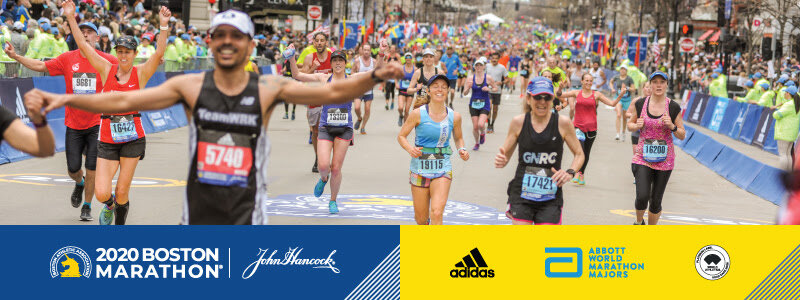
Our top priority continues to be safeguarding the health of the community, as well as our staff, participants, volunteers, spectators, and supporters,” said Tom Grilk, C.E.O. of the B.A.A. “While we cannot bring the world to Boston in September, we plan to bring Boston to the world for an historic 124th Boston Marathon.
The 2020 Boston Marathon, originally scheduled for April 20th, was subsequently postponed to September 14th by Boston Mayor Martin Walsh due to the COVID-19 pandemic.
All participants who were registered for the original event will be offered a refund and will have the opportunity to participate in the virtual Boston Marathon, which can be run any time between September 7th and September 14th. Along with the virtual race, there will be a series of events and activities, such as panel discussions, champion interviews and more.
Participants in the virtual 2020 Boston Marathon will be required to complete the 26.2 mile distance within six hours and provide proof to the Boston Athletic Association (B.A.A.). Finishers will receive a Boston Marathon program, t-shirt and runner’s bib.
Registration for the 2021 Boston Marathon will open at the end of September 2020. The qualifying window will start from September 15, 2008, which means that any qualifying time posted for 2020 will be accepted into the 2021 race.
For more information, please visit the website.

The new date for the IRONMAN World Championship in Hawaii, which was originally scheduled for October, will now take place on February 6, 2021. This is significant because it’s the original race month when the event first took place over 40 years ago in Kailua-Kona.
The new date for the IRONMAN 70.3 World Championship in New Zealand, which was originally scheduled for November, will now take place some time in early 2021.
Each year more than 94,000 athletes vie for slots to the IRONMAN World Championship, with approximately 2,500 of them making it to the starting line on race day. A study by Markrich Research estimated that the total economic impact of last year’s World Championship was $72 million.
“Although the economic impact is an important consideration for our local community, we understand and respect the decision to push back the Ironman World Championships to Feb. 2021,” Wendy Laros, Kona-Kohala Chamber of Commerce executive director, said in an email. “With arrivals of 20,000 in past events, Ironman athletes, supporters, families and friends fly with our airlines, stay at our hotels, shop at our retail stores, dine at local restaurants and tour with local companies whether snorkeling, diving, hiking or sightseeing.”
Each year more than 200,000 athletes compete for a slot to the IRONMAN 70.3 World Championship, with over 5,000 of them making it to the starting line on race day. This years race in Taupo, New Zealand was expected to create a total economic impact of $20 million NZD.
“This was no doubt a difficult decision, but the most important thing is that we as a community are ready to welcome these athletes when the time is right. We are proud to be home to the iconic IRONMAN New Zealand triathlon and are ready to showcase exactly why that is to the rest of the world. Bring on 2021,” said Taupo District Mayor David Trewavas.
As a result of the postponements, the qualifying window for both events has been extended to provide additional opportunities. Details can be found at http://www.ironman.com/im-world-championship and www.ironman.com/im703-world-championship.

More than 31,000 people have now registered on the Rock ‘n’ Roll Virtual Running Club platform, where they have access to a series of weekly challenges, races and rewards. Last weekend, was the third race in the series, called VR3, and this upcoming weekend will be the fourth installment, called VR4. Participants in previous races have come from over 80 nations and range in age from 18 to 82.
“For over twenty years, the Rock ‘n’ Roll Marathon Series community has been Bringing Fun to the Run® through a mixture of music, community and celebrating achievement,” says Andrew Messick, President & CEO for The IRONMAN Group. “At our core, it is about finding fun and motivation in the moments that challenge us. While this seems truer and more important than ever before, this has always been the brand’s heartbeat. We believe that this new Rock ‘n’ Roll Virtual Running Club will enable the running community to stay active, find structure and reach their finish lines in a positive, flexible and safe environment as they come together through a common passion.”
To compete and earn rewards, users track their activity with a compatible device and it gets uploaded to a digital dashboard. The virtual races take place weekly and begin on Fridays at 2 p.m. ET and close on Sundays at 8 p.m. ET. The next race kicks off on Friday, May 15th at 2pm ET.
How it Works
-
Create a profile and link it to a fitness tracking app.
-
Track your training, challenges and races via the Rock ‘n’ Roll dashboard.
-
Earn points for completing challenges and races.
-
Get exclusive access to rewards and swag.
For details and specifics regarding the Rock ‘n’ Roll running series, visit the website.
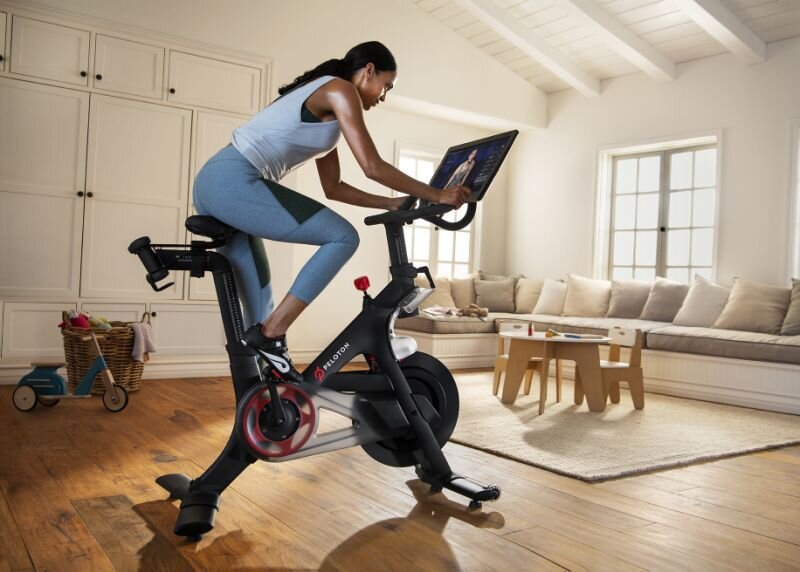
image credit: Peloton
Peloton, the fitness company that sells indoor cycling bikes, reported a 66% increase in sales from a year ago to $524.6 million. As more people turn to home-based workouts during the coronavirus pandemic, companies like Peloton are finding opportunity to grow their subscriber base and gain market share.
The company sells a spin bike that retails for $2,245 and a treadmill that costs $4,295. In addition, users pay $29 per month to have access to live streaming classes. Total members grew from 2.0 million in the second quarter to 2.6 million in the third quarter, and last month Peloton held its largest class ever, with more than 23,000 people live streaming from home.
The beautifully designed bike, engaging instructors and intuitive user experience has some calling it the “Apple of fitness.”
The stock price jumped from $20 per share in March to over $40 yesterday. Meanwhile, traditional gyms continue to suffer, and file for Chapter 11 bankruptcy.
The important question is whether Peloton will maintain this momentum once the pandemic ends, or if it’s just another fitness fad. In addition, the company faces increased competition from low-cost alternatives, such as Zwift and Sufferfest, which allow you to connect a regular bike to a trainer forgoing the need to purchase a spin-specific bike.
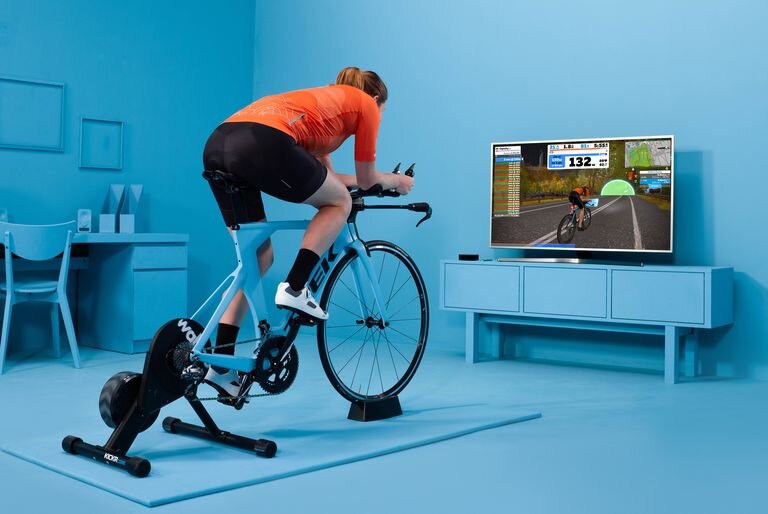
image credit: Zwift
The fitness platform, Garmin, released two reports on the global pandemic and its impact on activity levels. The first report focused on the United States and the second report focused on Europe.
Garmin engineers and data scientists looked at data from millions of Garmin smartwatch wearers to identify trends and changes in human behavior. Not surprisingly, daily step accounts have decreased drastically due to shelter-in-place orders.

image credit: Garmin
However, that doesn’t paint the whole picture or imply that people are less active during lockdown. Instead, there has been a shift in the type and location of activities that people are engaging in. As expected, people are exercising indoors with home-based workouts and engaging in social-distance friendly sports like running and cycling.
For example, indoor cycling was up 64% in the U.S. in the second half of March.

image credit: Garmin
In Europe, the change was even greater. Compared to February, indoor cycling is up 157% in France, 273% in Spain and 309% in Italy. Not only that, but people are riding longer, with a 12% average distance per ride increase. Outdoor cycling is up in countries where restrictions aren’t as severe, such as Germany, which saw a 153% increase.
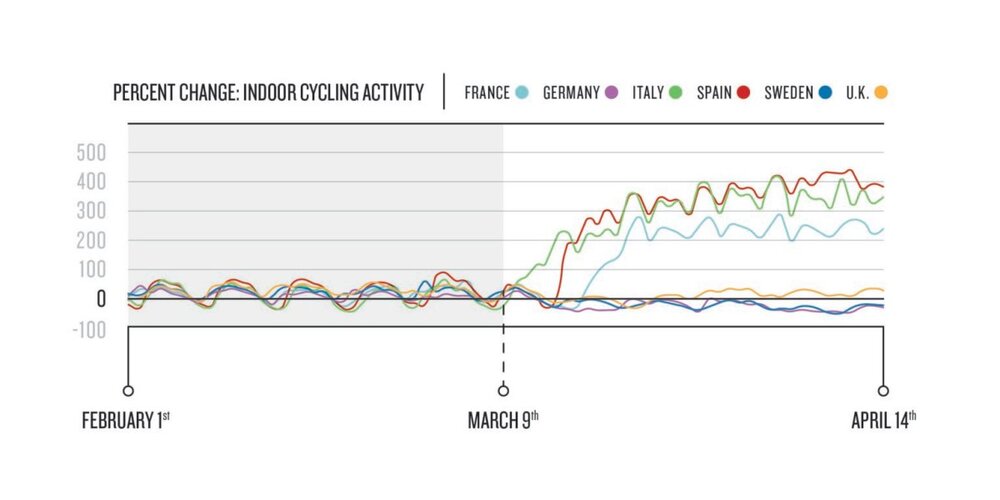
image credit: Garmin
Similarly, the change in virtual running activity has increased dramatically compared to 2019, with a six-fold increase in the number of running miles logged daily. In Italy and Spain running activities are up by 130% and 84%.
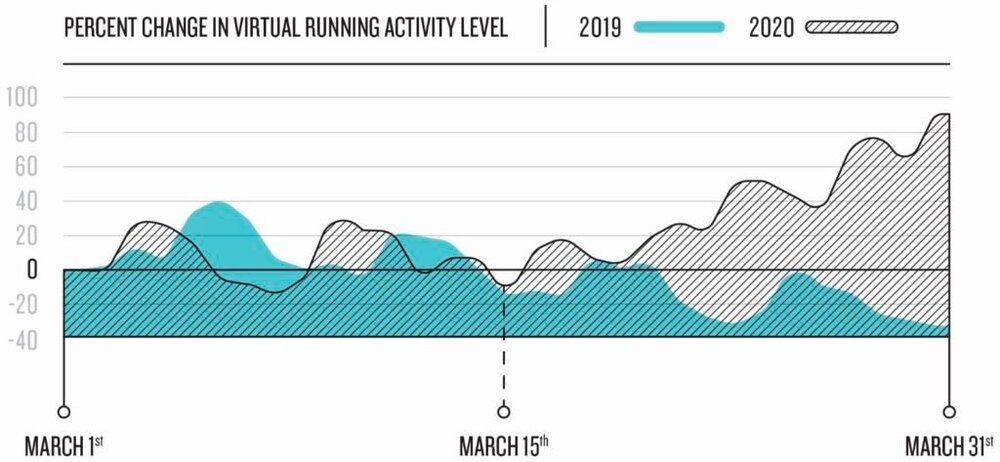
image credit: Garmin
Other activities, such as walking and yoga are up 36% and 11% respectively.
The most unusual activity? Floor climbing. No, not the typical stair master workout machine that comes to mind, but people actually running up and down stairs in their apartment or house. In Spain, climbing stairs is up a whopping 900%.
Lap swimming on the other hand? As expected, it has fallen off a cliff.
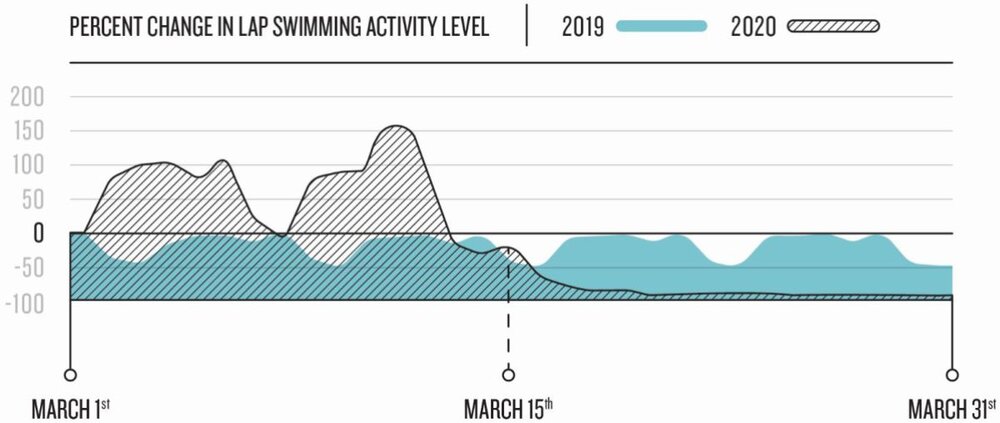
image credit: Garmin
With the pandemic limiting certain activities, clearly more people are turning to alternatives like home-based workouts, such as running and cycling. Many fitness studios are also offering live classes on digital platforms. However, it’s still too early to tell if the change in behavior is a temporary trend or if people will stick to these new routines once life returns to normal.
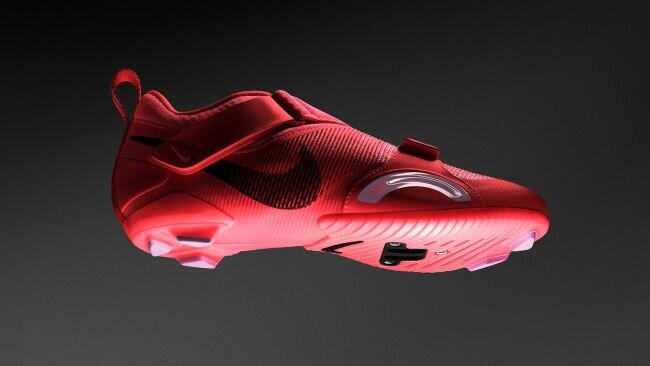
image credit: nike
Nike unveiled its first ever shoe for indoor cycling called “The SuperRep Cycle.” The shoe is designed to compliment high-end spin bikes and the clips are compatible with many major cleat systems, as well as caged pedals. It features a support arc to help keep feet secured during “Figure 8s” and side-to-side combination maneuvers. The lightweight mesh on the upper, a sockliner and bottom-mounted vents, help increase airflow and cut down on water weight from sweat.
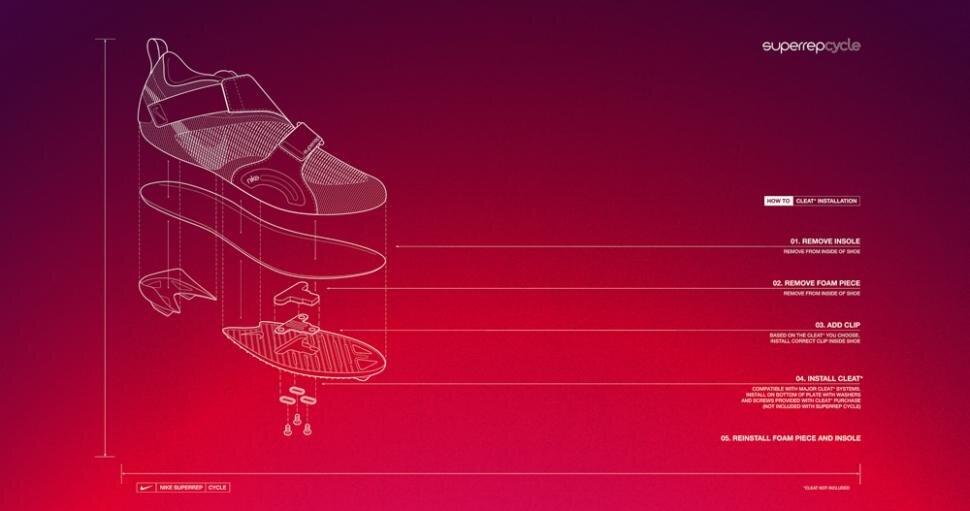
image credit: nike
Indoor cycling traces its routes back to 1965, when Schwinn introduced the first mainstream stationary bike. In the 1970s and ’80s, stationary bikes started popping up in homes and public gyms. Group fitness cycling classes began popping up in the 1990s when Johnny Goldberg, a South African Cyclist, created the first commercial Spinner bicycle and created a “Spinning” group exercise program at Crunch gyms in New York.
Nike’s launch comes at a time when spin class studios, such as SoulCycle and Flywheel are facing increased competition from at-home competitors like Peloton. The concept of group spinning studios was waining before COVID-19 changed our lives. This as traditional gyms are also facing heavy debt loads and severe uncertainty. Still, the cycling trend is showing no sign of slowing down. Instead, there is a paradigm shift as consumer behavior is starting to prioritize convenience and savings over luxury facilities and amenities.

The SuperRep Cycle is available for sale today in Europe and will be released globally on June 1st.
On Mother’s Day weekend, IRONMAN champions Mirinda Carfrae and Meredith Kessler, and proud moms, will compete in a virtual triathlon event from their homes in Boulder, Colorado and Columbus, Ohio. The event is free and fans can participate in the virtual 58-mile bike and 10-mile run at T Zero Endurance.
Carfrae and Kessler will begin the swim at 11 am in the H2X Challenger 15D swim spa, which allows athletes to swim continuously with an adjustable water current that mimics open-water conditions.
“It’s always a pleasure to share the ‘race’ course with Meredith but more importantly in this circumstance so we can engage with our community,” says three-time IRONMAN World Champion Mirinda Carfrae. “I’m hoping we can inspire others to join in for as much or little of the event as they like.”
Special guests, including Mike Reilly, “The Voice of Ironman,” and professional triathlete Ben Hoffman will make appearances during the event. In addition, fans who participate in the event will receive exclusive discounts and giveaways, along with an opportunity to support the Challenge Athletes Foundation.
“During this unique time, we have understandably been trying to find ways to compete and engage with other athletes and our partners,” Kessler says. This event is our way to truly celebrate and thrive, TOGETHER, with mothers and endurance enthusiasts everywhere.”
Event Timeline
Live piece will start 10:30 am and end approximately at 4:30 pm Saturday, May 9
11 am EST start: 2-mile swim
11:45 am: Transition
11:50 am: 58 mile bike
2:35 pm: Transition
2:40 pm: 10-mile run
3:55 pm: Post-race wrap-up
